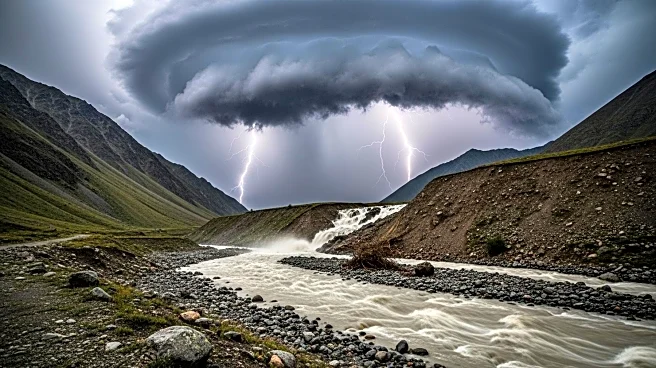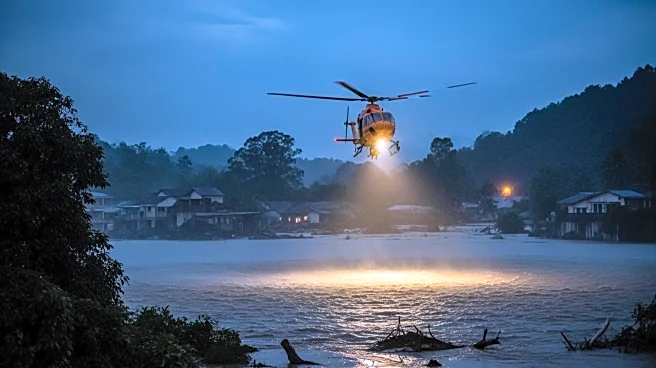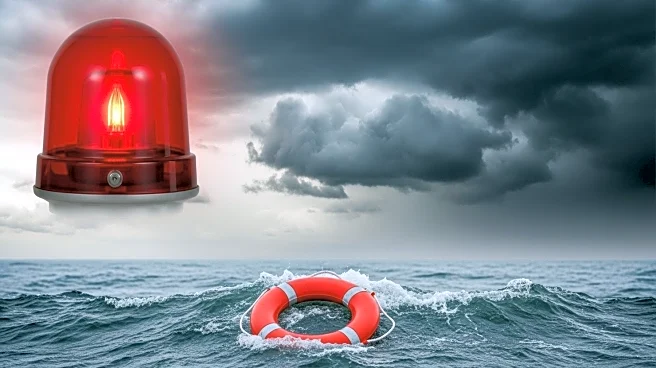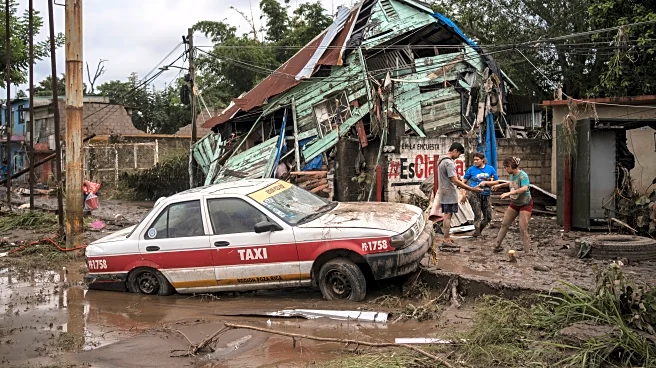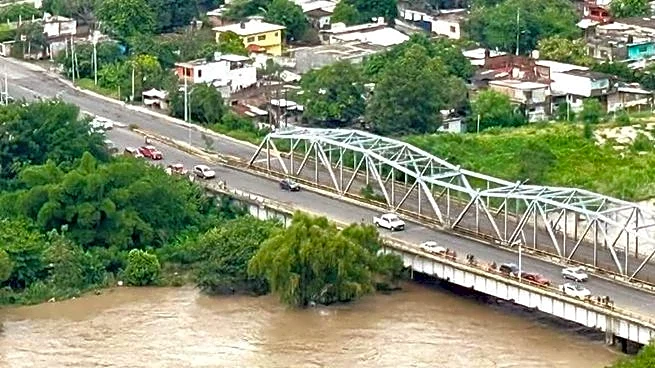What's Happening?
Incessant rainfall in central and southeastern Mexico has led to severe floods and landslides, resulting in the deaths of at least 41 people. The affected areas include Poza Rica, where the Cazones River overflowed, causing significant destruction. The heavy rains, attributed to Tropical Storm Priscilla and Tropical Storm Raymond, have damaged or destroyed over 16,000 homes and left 320,000 users without power. Rescue operations are underway, with soldiers clearing blocked roads and searching for missing persons.
Why It's Important?
The floods and landslides highlight the vulnerability of regions in Mexico to extreme weather events, exacerbated by climate change. The destruction of homes and infrastructure poses significant challenges for recovery efforts and underscores the need for improved disaster preparedness and response strategies. The impact on communities, particularly in low-lying areas, raises concerns about the adequacy of existing flood defenses and the need for sustainable urban planning.
What's Next?
Authorities are continuing rescue operations and efforts to restore power and clear roads. The focus will be on providing immediate relief to affected communities and assessing the long-term needs for rebuilding infrastructure. The government may need to implement measures to mitigate future risks, such as enhancing flood defenses and improving early warning systems. International aid and cooperation could play a role in supporting recovery efforts.
Beyond the Headlines
The disaster in Mexico serves as a reminder of the broader implications of climate change, including increased frequency and intensity of storms. It highlights the importance of global cooperation in addressing environmental challenges and supporting vulnerable regions. Ethical considerations regarding the equitable distribution of aid and resources are crucial in ensuring effective recovery and resilience building.




